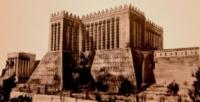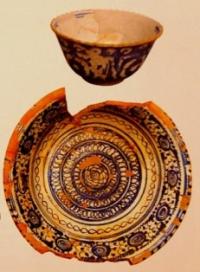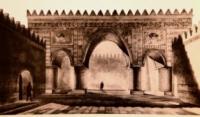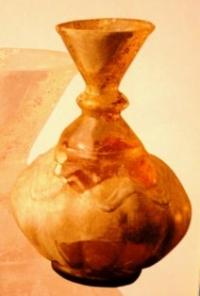Вы здесь
Varakhsha Palace.




Bureau of travels and excursions in Bukhara.
"The simple truth is better to be happy in a hut than unhappy in the palace"
Tours of the ancient architectural monuments of the Bukhara region.
The name of this ancient settlement says a lot to the heart and mind of an archaeologist, restorer, architect, art historian, tourist and local historian. In 1937, excavations were begun in the former capital of the “bukharhudaty” - before the Arab rulers of Bukhara.
Since then, the world has learned about outstanding artistic values, which allowed them to take a different look at the role and importance of the culture of the peoples of Central Asia and the development of world civilization.
It is still far from the mound of the ancient fortress, and under the feet shards, fragments of jugs and other ceramic products blush. Varakhsha gave art historians rich food for thought. Here were found Central Asian frescoes of the pre-Islamic period.
Wall paintings depict people and animals, that is, the world is living, breathing. But Islam forbade doing such things. The frescoes of Varakhshi represent “a flat and conventional style of painting, but with significant realistic elements”.
The frescoes that have come down to us are dated by scientists of the 7th - 8th centuries. ad. As they assume, the painting was made during the rule of the Bukhar-Hudat of Boaniath, who was killed for supporting the Mukanna uprising.
There is no doubt about the presence of a special building in Bukhara - the ruler’s palace. Its construction was favored by the political situation prevailing in the country in the last centuries that preceded the Arab conquest - the emergence of many separate independent principalities.
From the reports of written sources, the most famous is the story of Narshakhi about the palace of the Bukhara rulers of the Bukhar-Khudatov in Varakhsh, which, according to the author, “had no equal”. Varakhshinsky palace is located directly at the southern fortress wall of the settlement to the west of the citadel.
The building of the palace arose, as the excavations showed, in the Vth century AD. And existed until the end of the VIII or the beginning of the IX century. For a long time, it has undergone a very significant adjustment.
Three stages of its history were established, accompanied by capital restructuring, not counting minor repairs. During its peak, the building was a well-organized structure. In the structure of the palace building, the main were three large ceremonial halls arranged in a row - East, Red and West, the dimensions of which were respectively: 17 x 2.5, 12 x 8.5, 7.25 x 6.6 at the height of the walls, at least for the largest East, not less than 6.5 meters.
In these halls, along all the walls, were wattle and earthen sufa. In the Eastern Sufa Hall near the honorary (southern) wall expanded to form a wide platform. In the Red Hall before the sufa there was a special elevation for lamps or broilers. The ceilings in the halls were wooden darbazi type.
The walls of the main halls were richly decorated with picturesque scenes of various contents. The image of the royal reception, headed by the king himself, sitting on the throne, on the southern wall of the East Hall, as well as the presence of the platform mentioned above, make it possible to see the throne room in the last hall: In the Red Hall, the walls were painted with scenes of hunting predatory and fantastic animals.
The presence of wall paintings installed in the West Hall. From the west, the grand halls closed the vast courtyard of 30 x 9 meters. The whole territory of the courtyard was paved with burnt bricks. The southern part of the courtyard was raised under the rest of its area, forming an elevation, which led to three steps.
The main rooms of the palace, built on a high platform, towered significantly over the rest of the buildings of Shahristan.
Enlightener:
VG Saakov "History of Bukhara". Shark Publishing House, 1996. “Bukhara. Masterpieces of Central Asia. Historical guide to Bukhara. year 2012. "Bukhoro Bukhara Bukhara" In Uzbek, English and Russian. Publishing House "Uzbekistan", Tashkent 2000. Muhammad Narshahi. History of Bukhara. Tashkent. 1897 (translated by N. Lykoshina)







